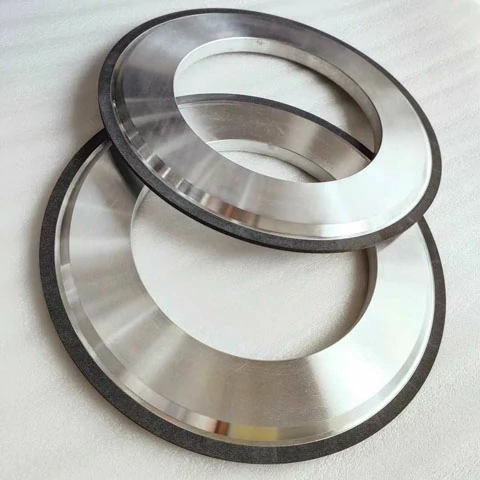Processing the PDC Drill Bit Repair and Rebuild
The repair and rebuilding of PDC (Polycrystalline Diamond Compact) drill bits is a critical aspect of maintaining drilling efficiency and reducing operational costs in the oil and gas industry. When these high-performance drill bits become worn or damaged, it is essential to have a comprehensive process in place to restore them to optimal working condition. In this article, we will delve into the intricate process of repairing and rebuilding PDC drill bits, highlighting the key steps involved and the advanced techniques employed in this crucial procedure.
**Assessment and Inspection**
Upon receiving a worn or damaged PDC drill bit for repair, the initial step involves a thorough assessment and inspection of the bit’s condition. Skilled technicians carefully examine the bit to identify the extent of wear, damage, and any potential issues that may have contributed to its diminished performance. This evaluation typically includes a detailed visual inspection, as well as advanced techniques such as CT scanning and digital imaging to provide a comprehensive understanding of the internal structure and condition of the bit.
Utilizing advanced imaging technology allows for a precise analysis of the cutting structure, integrity of the diamond cutters, and the overall condition of the bit’s critical components. The data gathered from these assessments serves as a crucial foundation for devising an effective repair and rebuild strategy, guiding the technicians in determining the specific repairs and modifications required to enhance the bit’s performance and longevity.
**Disassembly and Cleaning**
Following the thorough assessment, the next phase of the repair process involves the careful disassembly of the PDC drill bit. Precision tools and techniques are employed to dismantle the bit, allowing for individual components to be thoroughly cleaned and examined. Any debris, drilling fluids, or contaminants accumulated during the bit’s operation are meticulously removed to ensure a clean surface for subsequent repairs and modifications.
The cleaning process is vital in preparing the components for close inspection and repair, as it facilitates the identification of any underlying issues that may not have been immediately apparent during the initial assessment. By disassembling the bit and cleaning its components, technicians can gain a deeper understanding of the nature and scope of the necessary repairs, setting the stage for the subsequent stages of the repair and rebuild process.
**Repair and Rebuilding Techniques**
With the components of the PDC drill bit laid bare, the repair and rebuilding process can commence in earnest. This phase encompasses a range of advanced techniques and precision procedures, each tailored to address specific issues identified during the assessment and inspection stages. From restoring worn cutting structures to addressing diamond cutter damage, the repair and rebuilding techniques employed are designed to revitalize the bit’s performance and durability.
Advanced welding and material deposition methods are often utilized to rebuild worn or damaged surfaces, carefully restoring the original dimensions and functionality of the bit’s critical components. Additionally, the application of specialized coatings and treatments can enhance the resistance of the bit to abrasion, erosion, and other forms of wear, contributing to an extended operational lifespan and improved drilling performance.
Furthermore, the replacement of worn or damaged diamond cutters is a crucial aspect of the rebuilding process, leveraging state-of-the-art bonding techniques to securely affix new cutters to the bit’s structure. Through meticulous attention to detail and adherence to stringent quality standards, technicians ensure that the repaired and rebuilt components meet or exceed the original specifications, effectively rejuvenating the PDC drill bit for its future drilling endeavors.
**Quality Assurance and Testing**
As the repaired and rebuilt components are meticulously crafted, the importance of stringent quality assurance measures cannot be overstated. Before the reassembly of the PDC drill bit, each component undergoes rigorous testing and inspection to validate its structural integrity, dimensional accuracy, and functional performance. Advanced non-destructive testing methods, including ultrasonic and magnetic particle inspection, are employed to detect any potential defects or irregularities that could compromise the reliability and safety of the repaired bit.
Additionally, the dynamic performance of the reconstructed bit is evaluated through simulated drilling tests, replicating real-world operating conditions to assess its cutting efficiency, stability, and overall effectiveness. These comprehensive testing procedures serve to verify the success of the repair and rebuilding efforts, providing assurance that the revitalized PDC drill bit is ready to deliver exceptional performance in demanding drilling applications.
**Reassembly and Final Verification**
Once the individual components have undergone meticulous repair, reconstruction, and testing, the final phase of the process involves the precise reassembly of the PDC drill bit. Skilled technicians utilize specialized equipment and techniques to ensure the proper alignment and integration of the components, meticulously assembling the bit with meticulous attention to detail.
Following the reassembly, a final verification process is conducted to confirm the integrity and functionality of the fully reconstructed PDC drill bit. This comprehensive examination includes dimensional checks, rotational balance assessments, and additional testing to validate the bit’s readiness for deployment in drilling operations. By subjecting the rebuilt bit to a series of meticulous verifications, technicians affirm its compliance with exacting quality standards and its capability to deliver exceptional performance in the field.
In summary, the repair and rebuilding of PDC drill bits represent a sophisticated and multifaceted process that demands a combination of advanced technologies, precision techniques, and expert craftsmanship. By meticulously assessing, disassembling, repairing, and testing the components of these high-performance drill bits, skilled technicians can effectively extend their operational lifespan and restore their cutting-edge performance. Through a steadfast commitment to quality, precision, and innovation, the process of PDC drill bit repair and rebuilding ensures that these vital tools continue to drive efficiency and productivity in the oil and gas drilling industry, offering reliability and performance in the most challenging of drilling environments.
.webp)
